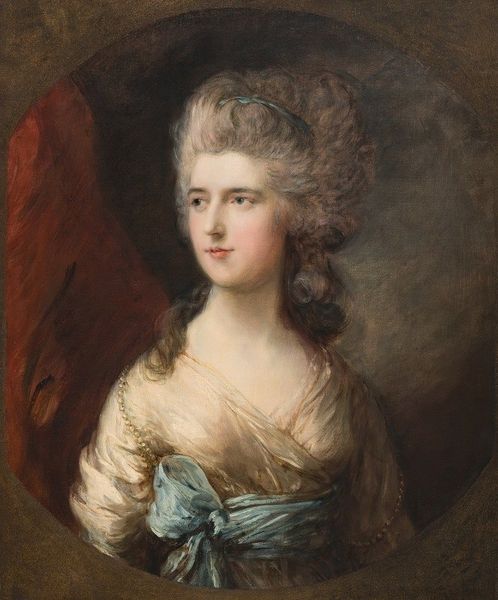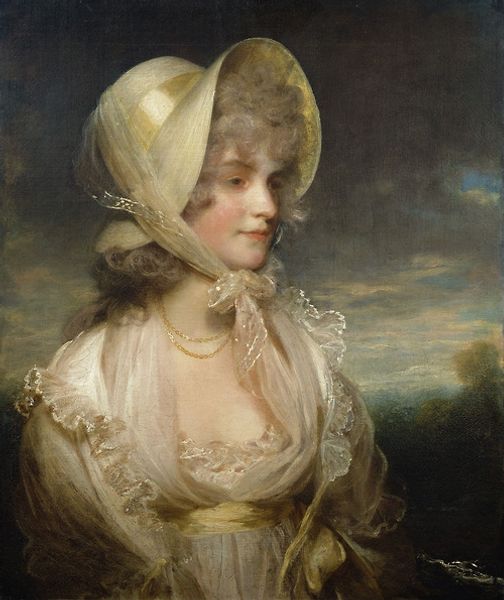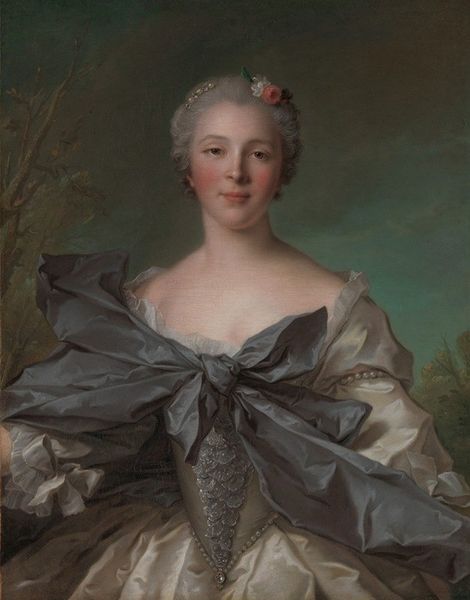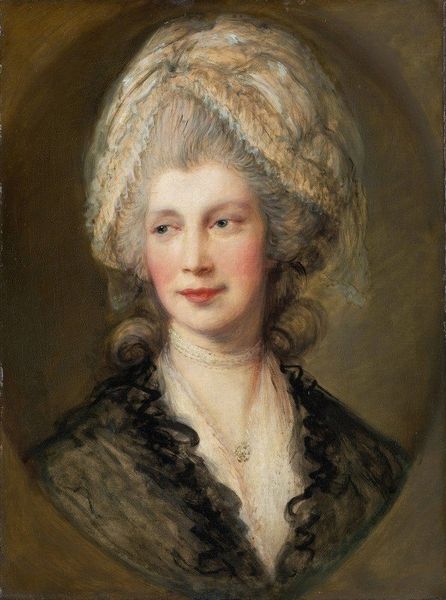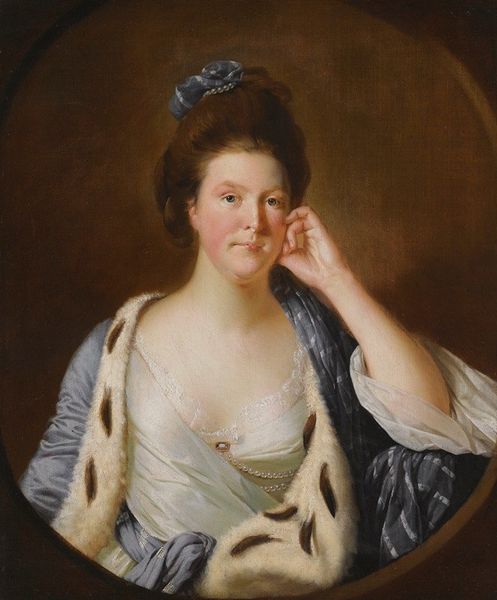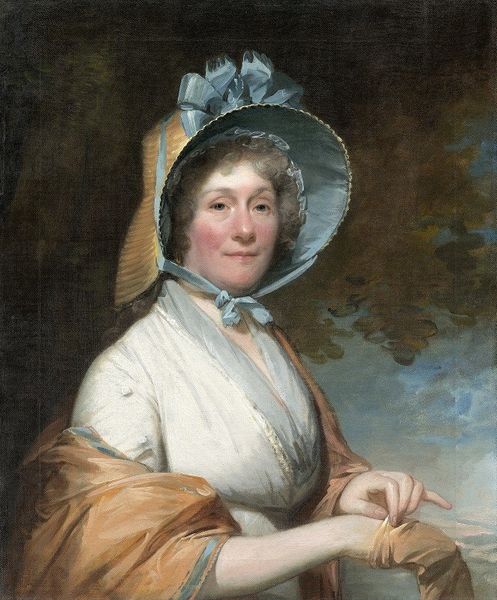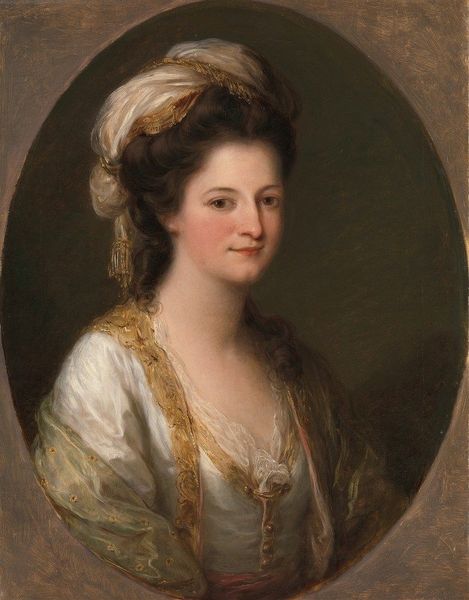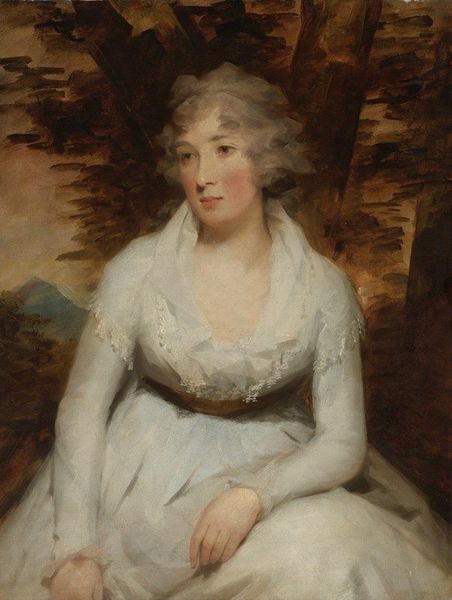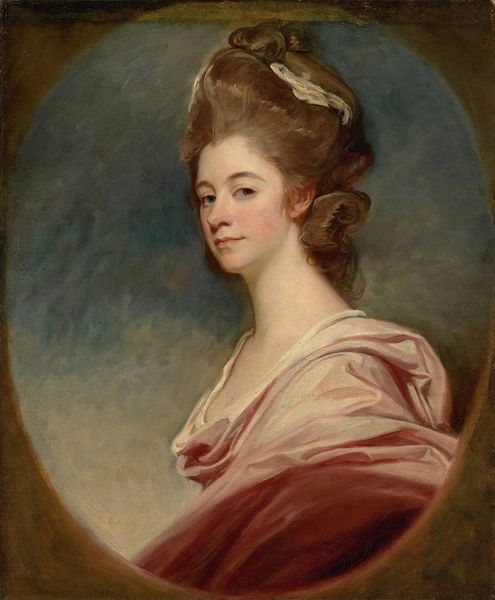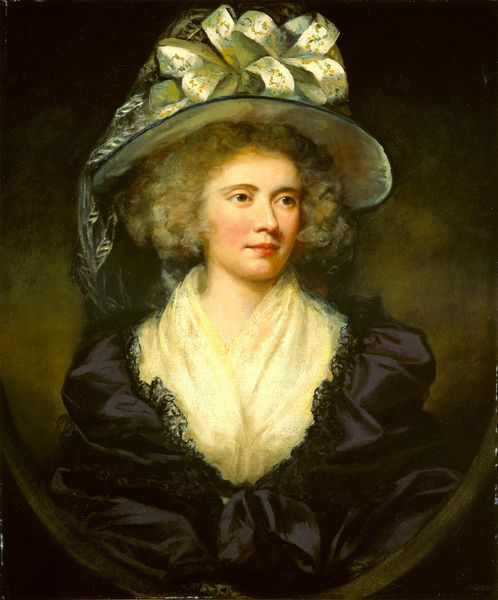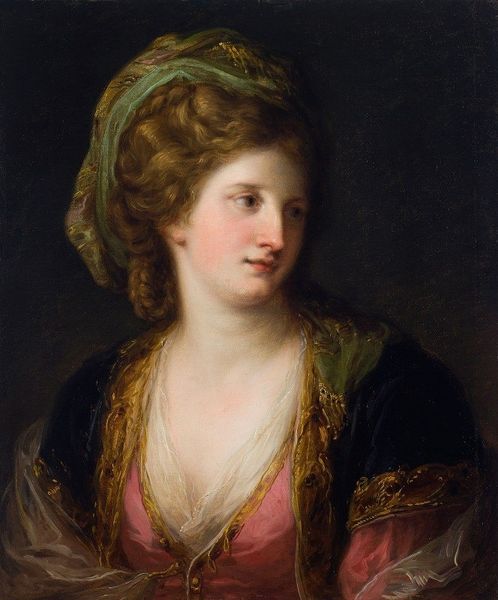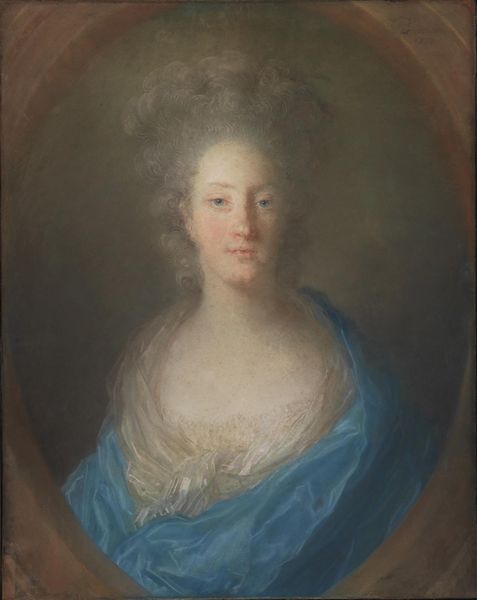
painting, oil-paint
#
portrait
#
figurative
#
neoclacissism
#
painting
#
oil-paint
#
figuration
#
oil painting
#
romanticism
#
portrait art
Copyright: Public Domain: Artvee
Editor: This is Gilbert Stuart's "Sarah Shippen Lea," painted around 1798, using oil paints. There's an interesting softness to the way she's portrayed, but the portrait also feels… reserved. What do you see in this piece? Curator: I see a negotiation between personal identity and societal expectations of women in the late 18th century. The soft features you noted contrast with the almost stoic composure, highlighting the internal tension many women faced: the push and pull between emotional expression and constrained public persona. Look at the locket – who do you think it portrays and what does it signify about Sarah Shippen Lea? Editor: It looks like a child, perhaps her son? Is she highlighting her role as a mother? Curator: Exactly. This object acts as a visual anchor, tethering her to the socially accepted role of motherhood, which granted women a certain degree of power and respect in that era. But consider this: while motherhood was valued, it also defined and confined women's identities. Stuart, intentionally or not, is showcasing that inherent paradox. Editor: So, her gaze, that feeling of "reservedness" as I called it, could be interpreted as…resistance? Curator: Precisely! Or, perhaps, a quiet assertion of self within the confines of her societal role. These portraits, even those seemingly straightforward, offer potent insights into the complexities of identity, gender, and power. Did the women Stuart painted see themselves reflected in the finished product, or was this purely Stuart's interpretation, bound by his own cultural and societal biases? Editor: That makes me look at all portraits very differently. It's not just a face; it's a negotiation. Thank you. Curator: And thank you. Art history offers rich material, it is about questioning the apparent and uncovering these nuances.
Comments
No comments
Be the first to comment and join the conversation on the ultimate creative platform.


